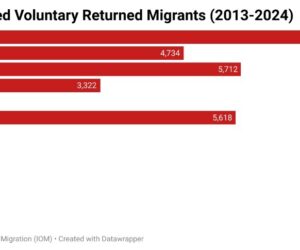A significant part of the Nigerian Insurance Industry Reform Act is the new minimum capital requirements for insurers. However, unlike banking recapitalisation, there are nuances around the insurance recapitalisation.
The first thing to note is that insurers have a deadline of June 30, 2026, to meet the new minimum capital requirements.
Then, unlike the banking recapitalisation, where equity capital had to be raised, the National Insurance Commission (NAICOM) is not mandating equity to be raised. In an interview with BusinessDay TV, Charles Lawson, Team Lead, Strategy and Business Development at Custodian Investment, noted a core difference between banking recapitalisation and insurance recapitalisation.
“The structure is different because their operations differ. Banks take daily deposits and lend money, so their capital protects against sudden withdrawals and loan defaults. Insurers, on the other hand, collect premiums and promise to pay claims in the future, sometimes years ahead. Their capital must be structured around long-term obligations, not daily transactions,” he said.
Risk exposure is the determining factor for minimum capital
Just like Lawson noted, the operations of banks differ fundamentally from those of insurance companies. And this difference is fundamental to the minimum capital requirement for insurance companies. In NIIRA 2025, the minimum capital requirement for a non-life insurer is the figure which between the risk-based capital of the firm and N15 billion. For life assurers, it is the higher of the risk-based capital or N10 billion.
This raises the question, what is “risk-based capital”? In answering the question, Lawson noted,
“Think of it like a driver’s license. If you’re licensed to drive a small car or tricycle, you don’t need a trailer license. Risk-based capital works similarly: insurers can only carry the size of risk their capital allows.”
Essentially, there is no one-size-fits-all approach in insurance recapitalisation. Insurers must now hold capital proportionate to the risks they are exposed to.
“Essentially, larger insurers with more capital can underwrite bigger risks, while smaller insurers may focus on niche products,” LAwson added.
The framework for determining this risk-based capital for each insurer is yet to be released by NAICOM.
An equity raise is not necessary
When the CBN issued a new minimum capital requirement, the instructions were simple. Minimum paid-up share capital must be increased, and retained earnings are not allowed to translate into share capital. Hence, publicly listed banks had to raise capital from the equity market.
However, for insurance companies, it is a different ballgame. While the injection of fresh funds through private placements, rights issues, or offer for subscription is welcome, it is not the only means. According to draft guidelines seen by BusinessDay, NAICOM notes that for existing insurers, the minimum capital requirement can be satisfied with net assets minus own shares held by the company (treasury shares).
The regulator, however, streamlines what portion of the total assets is “admissible” in the estimation of net assets. These admissible assets are
- Cash and bank balances
- Tenored deposits with financial institutions
- Government Bonds
- Treasury Bills
- Corporate Bonds (Quoted)
- Commercial Papers
- Quoted equities
- Loans to policyholders
- Loans to agents’ reinsurance assets
- Premium receivables (certified as received by external auditors)
- Investment properties (not more than 20 percent of MCR)
- Statutory deposit
Since NIIRA was signed into law, no publicly listed insurer has announced plans for an equity raise to meet the MCR. A signal that many of these insurers may not go that route. Also, unlike the banks, all indications point to the fact that retained earnings can be translated into minimum capital requirements.
For new insurers, the minimum capital requirement will be restricted to highly liquid and secure instruments. These include cash and bank balances, term deposits with financial institutions, government bonds, and treasury bills.
Recapitalisation plans must be submitted
NAICOM is proposing September 30, 2025, as the deadline date for the submission of the recapitalisation plans. The companies are required to outline their capital status in their H1 2025 financial results. They are also required to submit a detailed action plan outlining the amount and sources of capital injection, complete with timelines and deliverables.
For firms seeking to raise funds through the capital markets, NAICOM mandated a file-and-use approach, ensuring that plans are submitted and documented before execution.
In addition, insurers considering mergers or acquisitions must present their proposals in line with the new guidelines and existing insurance laws. The framework also makes provisions for portfolio transfers and run-off plans, particularly for composite insurers that decide to discontinue specific lines of business.
A progress report must be filed
Under the new guidelines, insurers are required to submit a monthly recapitalisation progress report no later than five working days after the end of each month.
The report must detail the company’s Minimum Capital Requirement (MCR) status, calculated in line with the approved template, as well as milestones achieved, and efforts undertaken toward meeting the recapitalisation plan.
Even after meeting the stipulated MCR, companies will be expected to continue filing monthly updates until a licence is issued or until otherwise directed by the Commission.









